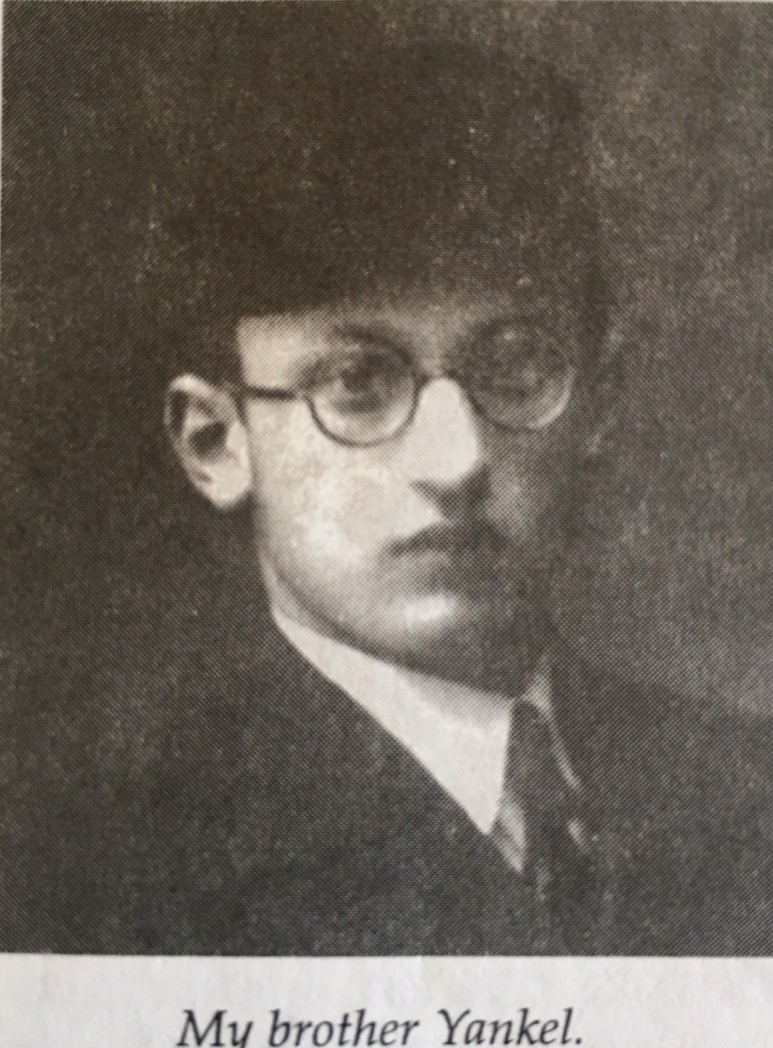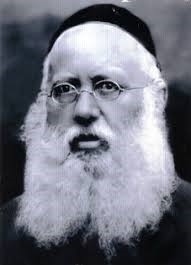Yakov Rabinowicz – his account was one of these that changed the ghetto
In late summer of 1942 Rabinowicz managed to escape from Treblinka, get back to Warsaw and tell what he had seen in the death camp.
A major turning point in the history of the Warsaw ghetto occurred with the first eyewitness accounts of escapees from the Treblinka extermination camp in the summer of 1942. Initially Treblinka was assumed to be solely a labour camp as the Head of the Judenrat, Adam Czerniakow, recorded. As mass deportations began in 1942, the ghetto population was assured by the authorities that they were being re-settled. It was not until the first eyewitnesses returned that the true nature of Treblinka was confirmed, leading to a variety of reactions by the ghetto inhabitants. These testimonies were publicised by Dr Emmanuel Ringelblum, and the Oneg Shabbes group. One of the escapees from Treblinka was Yakov Rabinowicz who is mentioned by Ringelblum, Abraham Lewin and Dr Hillel Seidman.
Photo: Yakov Rabinowicz (Going Forward, Peska Freidman, Mesorah Publications, Nowy Jork, 1994)

Yitzhak Yakov Rabinowicz was a son of the Chassidic Rebbe of Parczew, Rabbi Nosson Dovid Rabinowicz, a descendant of the Biala and Przysucha dynasties. He was born c.1915 in Parczew, and raised in the town of Siedlce, where his father had settled. After the death of his father in 1930, the family moved to Warsaw, to an apartment at Gęsia St. number 7A. It would appear that Yakov Rabinowicz studied in the Chachmei Lublin Yeshiva. He was in Warsaw during the German bombardment and served as a volunteer with the fire brigade. The family apartment was subsequently included in the ghetto area. At some point he fled to the Soviet territory, and it is unclear when he returned to Warsaw.
Photo: Rabbi Nosson Dovid Rabinowicz (Going Forward, Peska Freidman, Mesorah Publications, Nowy Jork, 1994)

Dr Hillel Seidman (The Warsaw Ghetto Diaries, p. 100 – Sept., 1942) claims to have known Rabinowicz previously, and states that he was a member of the Haboneh organisation. He had been working in the Landau workshop at 30, Gęsia St., and was captured during its blockade. The exact date of his capture is a matter of some speculation.
Rabinowicz was subsequently sent to Treblinka, from where he escaped, and eventually returned to Warsaw with detailed descriptions of conditions in the wagons en route to the camp, and their arrival. It would seem that he spent only a short period of time in Treblinka, possibly as short as one day. The guards assigned him to a group of workers collecting clothing etc. from the victims. Although he did not personally witness the extermination process, he was informed by another worker as to the fate of the deportees, and the system of killing. He resolved to escape, and successfully concealed himself amongst bundles of clothing loaded into the trains retuning to Warsaw. He jumped from the train as it neared Warsaw and hid amongst non-Jews until he could return to the ghetto.
Hillel Seidman records his conversation with Rabinowicz in the diary entry dated the 2nd of September 1942, and Abraham Levine, who worked together with Rabinowicz at the Landau workshop, has two entries dated the 25th and 27th of September. It appears that he contacted his cousin Shie Rabinowicz, a Bundist activist and member of the Oneg Shabbes group.
The testimony of Rabinowicz and other escapees led to the investigation of these reports, and the publication of proclamations urging the Jewish population to be aware of the reality of Treblinka and the German plans for the Jews of Warsaw, initiating a change of attitude in segments of the population that ultimately led to the ghetto uprising.
His ultimate fate is unknown, although Michael Zylberberg (Warsaw Diary, p. 79, January the 18th, 1943) notes, “I was in the company of Yitzhak Gitterman… a Hebrew scholar named Levine, and a man named Rabinowicz who had managed to escape from Treblinka…” If this refers to the same Rabinowicz, then he may have possibly been in Warsaw until the time of the ghetto uprising in April 1943.
David Berman – Talmudic scholar, researcher of Jewish texts. Born in Sydney, Australia. Studied in Gateshead Yeshiva in the United Kingdom where he obtained his rabbinical ordination. After relocating to Israel, he lectured and continued his studies of Jewish law and classical Hebrew works in various institutions specialising in in-depth analysis of halacha, among them the Tzanz Talmudic Academy. He resides in Warsaw.
Sources:
Ringelblum Archives. AR II/298
The Warsaw Ghetto Diaries. Dr Hillel Seidman. Targum Press, 1997.
A Diary of the Warsaw Ghetto. Avraham Lewin
Who Will Write Our History. Samuel Kassow. Indiana University Press, 2007.
The Warsaw Diary of Adam Czerniakow. Yad Vashem, 1968.
Going Forward. Peska Freidman, Mesorah Publications, 1994.
Photo: the remains of the railroad to Treblinka (Wikipedia; Little Savage)

